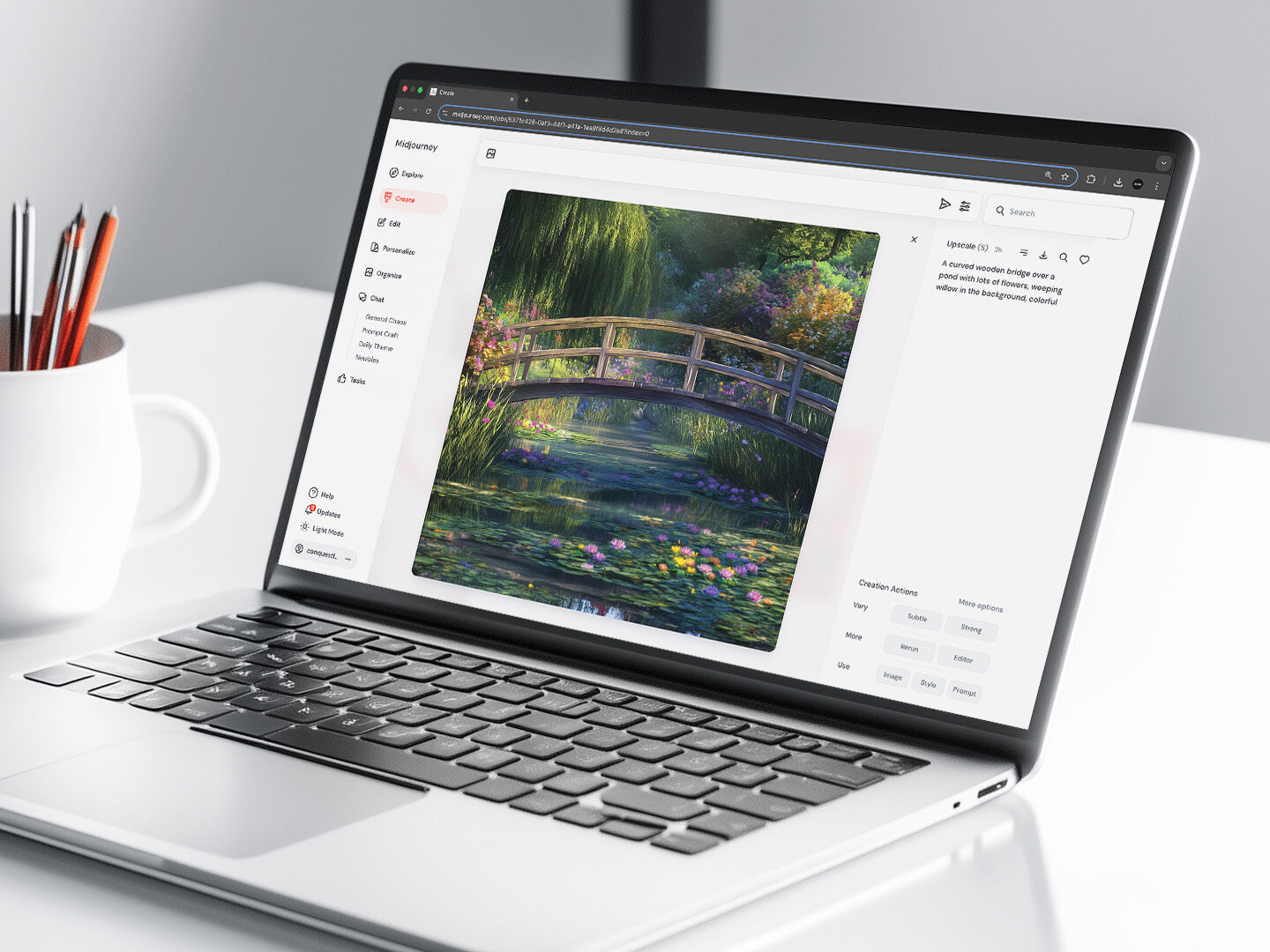Conquest Werbeagentur GmbH
Kürnbergblick 3
4060 Leonding
Conquest Werbeagentur GmbH
Kürnbergblick 3
4060 Leonding

Verena Ploberger
The world of marketing has changed enormously in recent years thanks to artificial intelligence. One click — and images, videos or texts are created that were not directly shaped by a human hand. However, as impressive as these technologies are, they raise a number of legal questions – especially when it comes to image and video rights. What does it mean to use AI-generated content in advertising? What are the legal pitfalls? And how do we deal with them as an agency? Let’s get to the bottom of these questions!
Who is the author of an image or video created by an AI? In Austria, the Copyright Act states that a work is only protected by copyright if it results from a personal intellectual creation (Section 1 (1) UrhG). Since AI usually generates an image without direct human input, the question arises: Who is the “mother” of the work? The answer is simple – no one. Because AI has no “intellectual” creator in the conventional sense.
For us as an advertising agency, this means that AI-generated content is generally not protected by copyright. At first glance, this sounds tempting – after all, it could mean that we can access such content at will. But this is only half the truth. The advantage is that AI-generated images and videos are basically free to use. But beware: there is still a catch.
While AI becomes “creative” by using existing works as training material, the danger of AI unintentionally replicating copyrighted elements creeps in. Imagine an AI creating an image that looks strikingly similar to a known photograph or artwork – without consciously replicating it. Even if the human influence is minimal, this could lead to copyright infringement, especially if the AI has been trained with copyrighted content.
Another risk is the infringement of trademark rights or personal rights, for example if the AI depicts well-known brand logos or celebrities in its images. As AI systems recognize and reproduce patterns, depictions of brands or people could be unintentionally created that are legally problematic.

With the introduction of the AI Act by the European Union, there are now clear rules for the use of artificial intelligence for the first time – including in the creative industry. This regulation is intended to ensure that AI technologies are used responsibly and do not pose any risks to fundamental rights, security or intellectual property. As an advertising agency, we have deliberately adapted our guidelines to this new legal framework in order to work not only creatively but also on the legal safe side.
Use as a tool, not as a replacement: AI is never the end product for us, but a creative tool. We rely on AI to gather inspiration and generate initial drafts, which we then refine with our own ideas and adaptations. This results in unmistakable designs that do not end up being “mainstream” but bear the unique signature of our agency.
Responsible choice of subject matter: We make sure that we work with universal and non-critical motifs – landscapes, abstract designs and atmospheric images are our preferred choice. We consciously avoid subjects that are subject to trademark or personal rights.
Transparency towards customers: When communicating with our customers, we value honesty and openness. We inform our partners about the extent to which AI-generated content is used so that everyone is in the picture and there are no surprises.
Ongoing training: As the legal landscape is constantly changing, regular training is essential for our team. The AI Act highlights the need to promote human-centric and trustworthy AI systems, which makes it all the more important for us to stay up to date. This is the only way we can make sure we offer our customers innovative and legally secure solutions.
AI-generated images and videos offer us as an advertising agency exciting new opportunities – but also challenges. The legal gray area surrounding copyrights, personal rights and trademark rights is complex and requires a conscious, reflective approach. Through transparent communication, responsible selection and continuous training, we can ensure that our clients receive not only creative but also legally safe content.
"*" indicates required fields